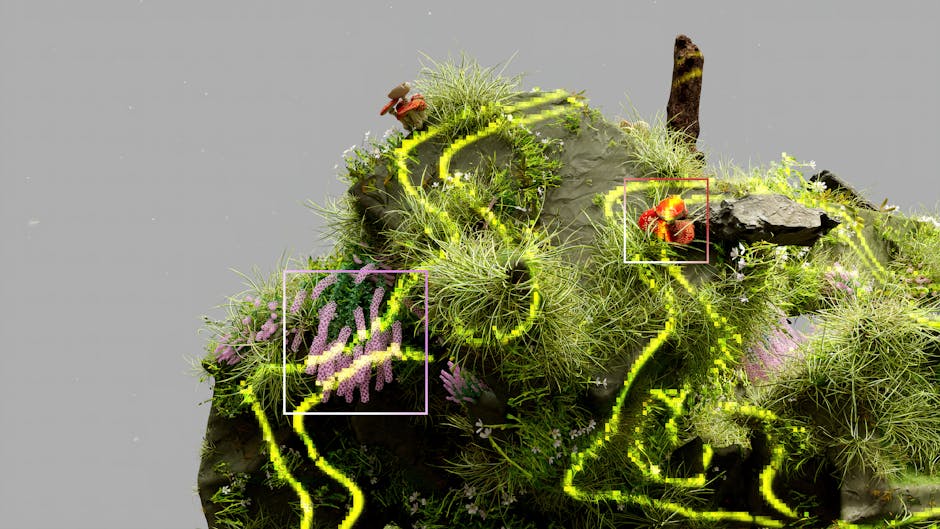The Role of Data in Environmental Research
Welcome to a world where data is not just a buzzword but a powerful tool driving meaningful change in the field of environmental research. In an era where climate change, biodiversity loss, and environmental degradation are looming threats, the role of data in understanding, addressing, and mitigating these challenges has never been more crucial. From tracking deforestation patterns to monitoring air quality, data plays a pivotal role in shaping policies, influencing decision-making, and fostering a deeper understanding of our impact on the planet. Join us on a deep dive into the world of environmental research and discover how data is transforming the way we perceive and protect our environment.
The Evolution of Environmental Research: A Data-driven Journey

Environmental research has come a long way from its humble beginnings, with data playing an increasingly central role in shaping the field. Gone are the days of relying solely on anecdotal evidence or limited observations. Today, researchers have access to a wealth of data sources, ranging from satellite imagery and ground sensors to citizen science initiatives and global databases. This abundance of data has revolutionized our understanding of environmental processes, allowing scientists to analyze trends, identify patterns, and predict future scenarios with unprecedented accuracy.
The Power of Big Data in Environmental Monitoring

One of the key applications of data in environmental research lies in monitoring and surveillance. With the advent of big data technologies, researchers can now process and analyze vast amounts of information in real-time, enabling them to track environmental changes on a global scale. For example, satellite data can be used to monitor deforestation patterns, detect illegal mining activities, or assess the impact of natural disasters on ecosystems. By harnessing the power of big data, scientists can gain valuable insights into the dynamics of our planet and implement targeted interventions to protect vulnerable areas.
Data-driven Decision Making: From Policy to Practice

When it comes to environmental conservation and sustainability, data is not just a tool for analysis but a driver of informed decision-making. Policymakers, conservationists, and stakeholders rely on data to design effective strategies, prioritize conservation efforts, and evaluate the success of interventions. By leveraging data analytics and modeling techniques, decision-makers can optimize resource allocation, identify areas of high conservation priority, and measure the impact of policy measures on ecological systems. In essence, data empowers us to make smarter, more evidence-based choices that benefit both the environment and society.
The Role of Citizen Science in Environmental Data Collection

In recent years, the rise of citizen science has democratized environmental research, allowing ordinary people to contribute valuable data to scientific projects. Whether it’s monitoring bird populations, documenting water quality, or mapping biodiversity hotspots, citizen scientists play a critical role in data collection and analysis. By engaging with communities and leveraging the power of crowdsourcing, researchers can gather large volumes of data across diverse geographic areas, providing a more comprehensive understanding of environmental issues. Citizen science not only expands the reach of environmental research but also fosters public engagement and awareness, turning ordinary individuals into environmental stewards.
Data Challenges and Opportunities in Environmental Research
While data holds immense potential for advancing environmental research, it also presents challenges that must be addressed. Issues such as data quality, interoperability, and accessibility can hinder the effectiveness of data-driven initiatives and limit their impact. Researchers must grapple with complex datasets, data silos, and privacy concerns, requiring robust data management practices and collaboration across disciplines. However, these challenges also present opportunities for innovation and collaboration. By investing in data infrastructure, capacity building, and data sharing mechanisms, the environmental research community can unlock new insights, drive interdisciplinary research, and accelerate progress towards sustainable solutions.
The Future of Environmental Research: Data-driven Innovations
As we look ahead to the future of environmental research, one thing is clear: data will continue to play a central role in shaping the field. Emerging technologies such as artificial intelligence, machine learning, and remote sensing are revolutionizing how we collect, analyze, and interpret environmental data. From predicting climate change impacts to monitoring wildlife populations, these innovations hold the promise of unlocking new frontiers in environmental research. By embracing data-driven approaches, researchers can tackle complex environmental challenges with greater precision, agility, and effectiveness, paving the way for a more sustainable and resilient future.
Common Misconceptions About Data in Environmental Research
Despite the growing importance of data in environmental research, there are still some common misconceptions that persist. One of the most prevalent myths is that data is only relevant to scientists and experts, overlooking the role that ordinary citizens can play in contributing valuable data through citizen science initiatives. Another misconception is that data is static and unchanging, failing to recognize the dynamic nature of environmental processes and the need for ongoing monitoring and adaptation. By addressing these misconceptions and promoting a more inclusive and nuanced understanding of data in environmental research, we can harness its full potential to protect and preserve our planet.
Conclusion: Empowering Environmental Research Through Data
To wrap things up, the role of data in environmental research is not just a trend but a transformative force driving innovation, collaboration, and impact. By leveraging the power of data, researchers can uncover hidden patterns, make informed decisions, and unlock new solutions to environmental challenges. From monitoring biodiversity to tracking climate change, data is the key that unlocks a deeper understanding of our planet and guides us towards a more sustainable future. As we navigate the complex landscape of environmental research, let us embrace data as a powerful ally in our quest to protect and preserve the natural world for generations to come.
Long story short, data is not just a tool in environmental research it is the cornerstone of our efforts to safeguard the planet and ensure a thriving future for all living beings. So, let’s harness the power of data, foster collaboration, and pave the way for a brighter, more sustainable tomorrow.




